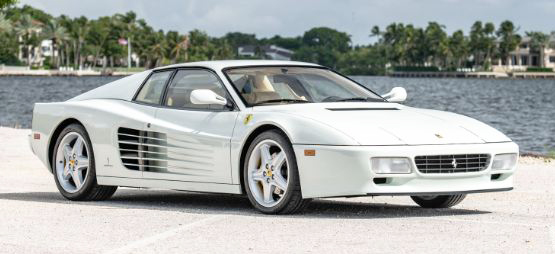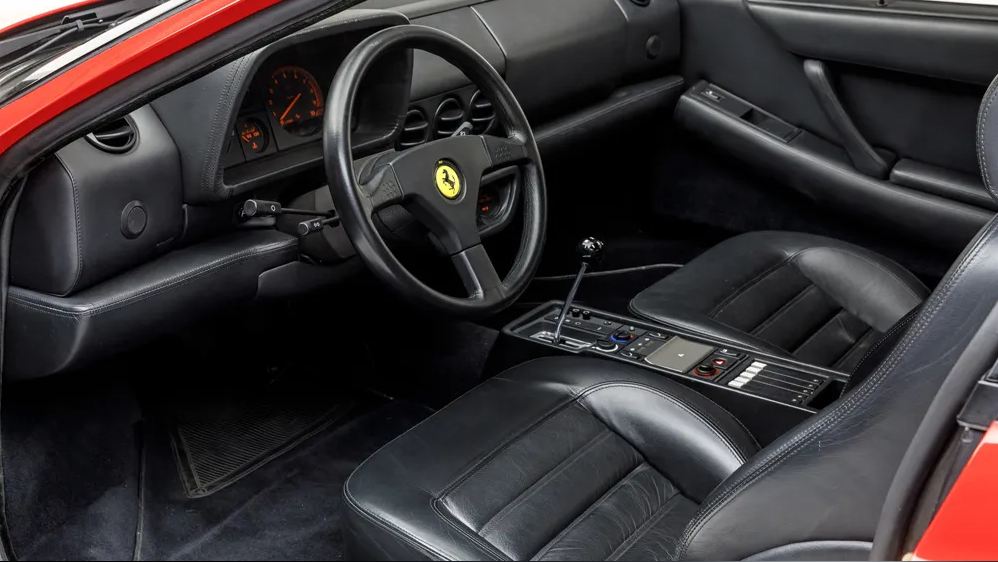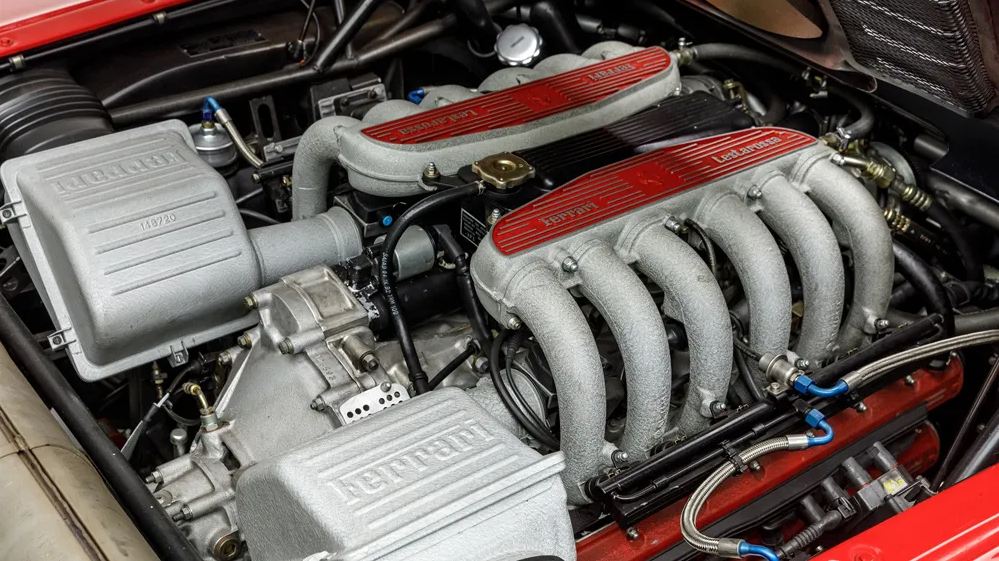Not All Ferrari 512 TRs Are Created Equal The Rienzi Report

Tony Rienzi
Volume 50 Issue 13
Jul 12, 2025
Are all 512 TRs the same? No, there are differences you should know about. Tony Rienzi goes into details that may influence your purchasing decision.
If you think all 512 TRs are the same, this will cost you.
To most eyes, every 512 TR looks the same. But seasoned collectors see a divide between the cars they chase and the ones they pass on.
Some early models were built with weaker components that required costly corrections. Others, especially from 1994, came with factory upgrades that brought them closer to the F512 M spec. Most fall in between. That spectrum opens doors, but only for those who know what they’re looking at.
This isn’t about styling. It’s about differences that affect how the car performs, holds value, and trades in a fast-changing market. From gearbox serials to differential design, Classiche eligibility to production numbers, the gap between the best and the rest is widening.
This report unpacks the critical details. What to seek out, what to avoid, and how seasoned buyers already make their decisions. Because under the same badge, these cars are not created equal.

The Production Evolution:
Between 1991 and 1994, Ferrari built 2,261 512 TRs. But not all years are the same.
Early builds carried over a welded differential housing from the Testarossa era. Known for failures under stress, they’re a red flag for long-term ownership. Starting with gearbox serial 1370, Ferrari introduced a forged differential that resolved the issue.
Then came the real evolution. At gearbox S/N 1513 and above, Ferrari added dowel pins and finer-threaded bolts on the ring gear, features carried over into the F512 M. These updates improve reliability and align the car mechanically with Ferrari’s final flat-12.
Buyers who know how to identify these changes are ahead of the game.
Later 512 TRs are more reliable, more desirable, and more likely to be Classiche certified.
The 1994 cars have another advantage: rarity. Production declined toward the end of the run, and that scarcity adds value. Not only are they few, just 27 were made for the U.S. market, but they also feature ABS braking, making them the most evolved and safest variant. ABS (anti-lock braking system) was a significant safety upgrade in 1994, confirming the car’s status as a late-production model.
Ferrari 512 TR Global Production Breakdown:
Year Units Produced
1991/ (92 model) 17
1992 1,228
1993 989
1994 27
Total 2,261
Out of these, approximately 408 were delivered to North America (U.S. and Canada), with the vast majority going to the United States.
Estimated U.S. market cars: ~400–408 units.
Years sold in the U.S.: 1992–1994.
Most early deliveries (Dec. 1991 onward) were U.S.-spec cars.
1994 models = final production year, ABS-equipped, extreme rarity.
Collectors who can decode a VIN or gearbox serial are unlocking pricing power.
Insider Snapshot: Key Differentiators to Watch For:
Gearbox S/N ≥1370 = forged differential (known to eliminate failure-prone welded units).
Gearbox S/N ≥1513 = dowel-pinned ring gear, carried into the F512 M.
Engine S/N ≥31108 = upgraded 20mm quill shaft (vs. weaker 17mm shaft, improves drivetrain strength).
VIN range S/N 96000–99743 = higher likelihood of mechanical updates.
Gearbox casting “Tipo 124859” = commonly associated with updated spec.
Low production for 1994 = just 27 built for U.S., many with all upgrades.
1994 models feature ABS = which enhances safety, drivability, and collector desirability.
These specs matter. When documented and verified, they significantly influence a car’s value, Classiche eligibility, and long-term collector appeal. When you understand where Ferrari made its upgrades, you know where the value lies.
Service, Certification, and Ownership History:
Mechanical upgrades matter. But service history and documentation drive market confidence.
Ferrari Classiche certification signals originality and factory-correct features. Learn more directly from Ferrari: Ferrari Classiche Certification. Classiche-ready cars earn a meaningful premium and are often sold privately.
Serious buyers look for complete service records, original books and tools, and evidence of major engine-out maintenance. Gaps in documentation, missing accessories, or unclear mileage history can stall a deal.
While the 512 TR is often associated with the dreaded engine-out belt service, many fears are based on outdated thinking. Experts like Michael Sheehan have noted that Ferrari’s original belt inspection recommendation exceeded 50,000 miles. Gates, the manufacturer of the belts themselves, now suggests a nine-year interval.
This puts modern ownership into perspective. When properly understood, the 512 TR doesn’t demand unnecessary early services, it rewards owners who follow smart, informed intervals. It’s not about skipping care; it’s about knowing what matters.
Buyers strongly favor cars maintained by authorized Ferrari dealerships, where service is documented, consistent, and thorough. These records reflect responsible stewardship and eliminate concerns about corner-cutting. Independent shops, even experienced ones, rarely offer the same level of traceability, which impacts confidence and value.
Aftermarket exhaust, modified interiors, and repainted panels all subtract from the car’s investment-grade appeal. These changes limit resale options and push serious collectors away.
The strongest examples are documented, clean, and correct. That’s what earns interest and big numbers.
On the Market:
Year Color Miles Price
1994 Red/tan 9k $425,990
1994 Red/black 3k $529,900
1992 Red/black 31k $279,900
Previous Sale Results:
Year Color Miles Price
1994 Red/black 287 $582.5
1993 Red/tan 23k $291k
1993 Red/tan 39k $250k
1992 Black/black 6k $394.5
1992 Silver/black 34k $285k
1992 Red/tan 12k $280.5
Premiums:
Sub 5k Miles 20%
Sub 10k Miles 10%
1994 M Diff 25%
U.S. ++%
Color 5-25%

Market Pricing: What to Pay and Why:
The market no longer treats every 512 TR the same. It’s rewarding the right builds and punishing average ones.
A clean 1992 or 1993 typically brings $235,000 to $285,000, depending on condition, miles, and paperwork. These are solid drivers and represent the entry point.
By contrast, 1994 models with the improved differential and lower build numbers consistently command $335,000 to $412,000. A 1994 with ultra-low mileage and Classiche potential recently sold for $582,500.
Cars built after gearbox S/N 1513 with the M-style differential can bring 15–25% more. The upgrades are real, and the market sees it.
Expect to pay north of $500,000 for a top-tier 1994 with clean records and verified components. Sellers should present VINs, gearbox numbers, and Classiche readiness up front, because buyers are paying for that certainty.
The best 512 TRs aren’t just climbing in value. They’re separating from the rest.
Buyer’s Checklist: What to Look for in a Top 512 TR
Feature Why It Matters
Year: 1994 Only 27 produced, most have all factory upgrades.
Gearbox S/N ≥1513 Indicates M-style differential & F512 M updates.
US-Spec Documented car ensures compliance, value retention, easier resale.
Mileage Under 10K Brings top-tier premiums (A+ collectible status).
Mileage Under 20K Still strong value, but less rare (B-status).
Color: Rare Shades Grigio, Blu, Nero outperform standard red.
1993–1994 with ABS “Enhanced safety” and drivability, late-production.
Classiche Ready Signals factory-correct originality.
Full Ferrari dealership service history confirms no corners cut, reflects true stewardship.

Final Take: Know What You’re Buying
This is a precision market. The difference between a $280K driver and a $580K collector-grade 512 TR is driven by facts, verifiable ones.
The most desirable cars are late-production models with the M-style differential, ABS, rare colors, and full Ferrari dealership service history.
A 1994 with under 10,000 miles and Classiche potential is at the top of the food chain. Even late 1993s with the right updates and provenance can command a premium.
Collectors pay more for:
Late production (preferably 1994, or updated 1993).
Mileage under 10K (A+ collectible), under 20K with records (top-tier driver).
Rare colors like Nero, Grigio, or Blu.
Documented Ferrari dealer service history.
A car that checks at least three of these four is a strong long-term hold.
If you’re buying, target quality and documentation. If you’re selling, lead with proof.
Because not all 512 TRs are created equal, and today’s market rewards evidence.
-----------------
Tony Rienzi produces The Rienzi Report. His insights into the market and reviews of exotic automobiles can be found at www.rienzireport.com.
